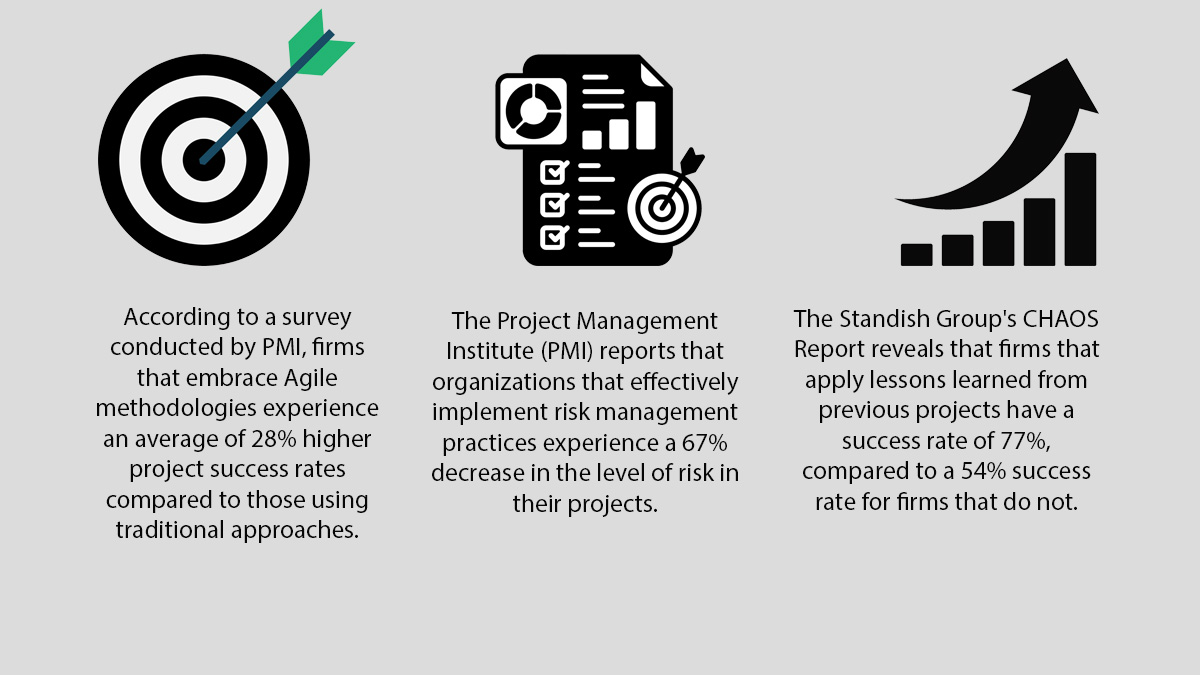
You surely must have come across various project management best practices that assure project success. However, it is interesting to observe that many project management best practices go unnoticed and are relatively more effective in upscaling projects. Project management is a complex and multifaceted discipline that requires a careful balance of skills, strategies, and techniques to ensure the successful delivery of projects. While many best practices are well-known and widely used, there are some lesser-known practices that can significantly enhance project outcomes.
Incorporating unconventional best practices can take project outcomes to new heights. But how do you figure out the right project management best practices for you? As the project management landscape evolves, it is essential to continuously explore and implement innovative practices to stay ahead and drive successful project outcomes. This article explores key project management best practices from reputable sources and uncovers valuable insights that go beyond conventional approaches.

The Significance of Project Management Best Practices
Project management best practices are essential for achieving successful project outcomes and maximizing organizational performance. Here are several reasons why project management best practices are important:
- Improved Project Success Rates: Following best practices increases the likelihood of project success. By implementing proven methodologies and strategies, you can effectively plan, execute, monitor, and control projects, resulting in higher success rates and the delivery of desired outcomes.
- Enhanced Efficiency and Productivity: Best practices promote efficient project management processes, helping teams optimize their resources, time, and effort. By adopting standardized approaches, you can streamline workflows, eliminate redundant activities, and enhance team productivity.
- Effective Risk Management: Best practices in risk management enable project teams to identify, assess, and mitigate potential risks that can impact project objectives. Proactive risk management minimizes project disruptions, reduces costly rework, and enhances stakeholder confidence.
- Clear Communication and Stakeholder Engagement: Effective communication is a cornerstone of project management. Best practices emphasize the importance of clear and timely communication among team members, stakeholders, and sponsors. Engaging stakeholders and ensuring their involvement throughout the project lifecycle fosters collaboration, alignment, and a shared understanding of project goals.
- Optimal Resource Allocation: Project management best practices help organizations optimize resource allocation. By employing techniques like resource levelling and capacity planning, project leaders can ensure that resources are allocated efficiently, preventing overutilization or underutilization of team members, equipment, and budget.
Unveiling Hidden Gems: Project Management Best Practices Worth Implementing
"Incorporating Agile methodologies has been a game-changer for our organization, resulting in 28% higher project success rates."
- John Smith, CIO of TechGenius Corp.
- Agile Methodologies for Flexibility: According to PMI, organizations that embrace Agile methodologies experience an average of 28% higher project success rates compared to those using traditional approaches. While traditional project management methodologies have their merits, Agile approaches, such as Scrum and Kanban, offer a more flexible and adaptive framework. By embracing iterative and incremental development, Agile methodologies enable project teams to respond to changing requirements and deliver value in shorter cycles. Incorporating Agile practices, such as daily stand-up meetings and retrospectives, can foster collaboration, improve transparency, and increase stakeholder satisfaction.
- Benefits Realization Management: While project success is often measured by meeting deadlines and budgets, true success lies in delivering the intended benefits and value. Benefits Realization Management (BRM) is a proactive approach that focuses on aligning projects with organizational goals and ensuring the realization of expected benefits. By clearly defining and tracking project benefits throughout the project lifecycle, project managers can drive strategic alignment and maximize the return on investment.
- Change Management Integration: Research by Prosci indicates that projects with effective change management practices are six times more likely to meet or exceed project objectives compared to projects with poor change management. Change is inevitable in any project, and effectively managing change is critical to project success. Integrating change management practices into project management processes helps anticipate and address potential resistance to change, mitigate risks, and ensure smooth transitions. By proactively managing stakeholder engagement, communication, and training, project managers can foster acceptance and adoption of changes, reducing project disruptions and increasing the likelihood of success.
- Lessons Learned for Continuous Improvement: The Standish Group's CHAOS Report reveals that organizations that actively capture and apply lessons learned from previous projects have a project success rate of 77%, compared to a 54% success rate for organizations that do not focus on lessons learned. Learning from past experiences is a powerful way to improve future project outcomes. Integrating a formal process for capturing and sharing lessons learned at the end of each project enables organizations to leverage valuable insights and avoid repeating past mistakes. By documenting successes, challenges, and key takeaways, project teams can foster a culture of continuous improvement, drive knowledge sharing, and enhance project delivery capabilities.
- Stakeholder Engagement as a Strategic Priority: Beyond conventional stakeholder management practices, project managers should actively involve stakeholders in decision-making, seek their input throughout the project, and ensure their needs and expectations are addressed. By treating stakeholder engagement as a strategic priority, project managers can build stronger relationships, gain valuable insights, and create a sense of ownership and shared responsibility.
- Risk Management: The Project Management Institute (PMI) reports that organizations that effectively implement risk management practices experience a 67% decrease in the level of risk in their projects. By identifying and proactively addressing potential risks, project managers can minimize their impact and improve project outcomes.
- Communication and Collaboration: Effective communication and collaboration are crucial for project success. Project management experts believe that projects with strong communication practices are 1.5 times more likely to meet or exceed their objectives. Encouraging open and transparent communication channels and fostering collaboration among team members can enhance coordination and alignment.
- Continuous Monitoring and Adaptation: The ability to monitor project progress and adapt accordingly is essential in dynamic project environments. According to the PMI report, organizations that have high project management maturity are twice as likely to successfully deliver projects. Continuous monitoring allows project managers to identify deviations and take proactive measures to keep projects on track.
In conclusion, project management best practices are the guiding principles that lead to successful project outcomes and drive organizational performance. By incorporating these practices into project management processes, teams can improve project success rates, enhance efficiency and productivity, and effectively manage risks and resources. Clear communication and stakeholder engagement play a crucial role in fostering collaboration and alignment among team members and stakeholders.
Unveiling hidden gems in project management, such as Agile methodologies, Benefit Realization Management, change management integration, and lessons learned for continuous improvement, can significantly elevate project outcomes. Stakeholder engagement should be treated as a strategic priority, and effective risk management ensures the identification and mitigation of potential risks.
TrueProject can improve project management strategies in several ways by providing valuable tools and features that enhance planning, execution, monitoring, and collaboration. TrueProject promotes transparency by providing a centralized platform where all project-related information, including progress, issues, and data, is accessible to stakeholders. This transparency increases accountability among team members, leading to better performance and responsibility for project tasks.
More information on TrueProject can be found at: TrueProjectInsight.com
About the Author
Serving as the CEO at TrueProject, Tom Villani plays a major role in shaping the company's strategic direction, driving growth, and fostering a culture of innovation. Prior to his role at TrueProject, Tom worked as the Senior Vice President, Digital Innovation of CAI, Vice President of Global Alliances and Partners at Hitachi Vantara, and key senior executive roles with Information Builders, MicroStrategy and AT&T. Tom also serves in advisory board capacities in the areas of Big Data and IoT.
Endnotes
- Alexander, Moira. "Project management: Tips, tools, best practices." CIO, December 5, 2022. https://www.cio.com/article/228109/project-management-tips-strategies-best-practices.html
- Iyer, Yuvika. "Don't Forget These 17 Project Management Best Practices." Wrike, September 13, 2022. https://www.wrike.com/blog/project-management-best-practices-infographic/
- PMI. “Agile Practices Survey (2017).” September 2017. https://www.pmi.org/pmbok-guide-standards/practice-guides/agile
- Prosci. “Best Practices in Change Management.”
- The Standish Group International Inc. “CHAOS Report 2015.” 2015.
- Wallen, Jack. "8 project management best practices." TechRepublic, November 1, 2022. https://www.techrepublic.com/article/project-management-best-practices/






